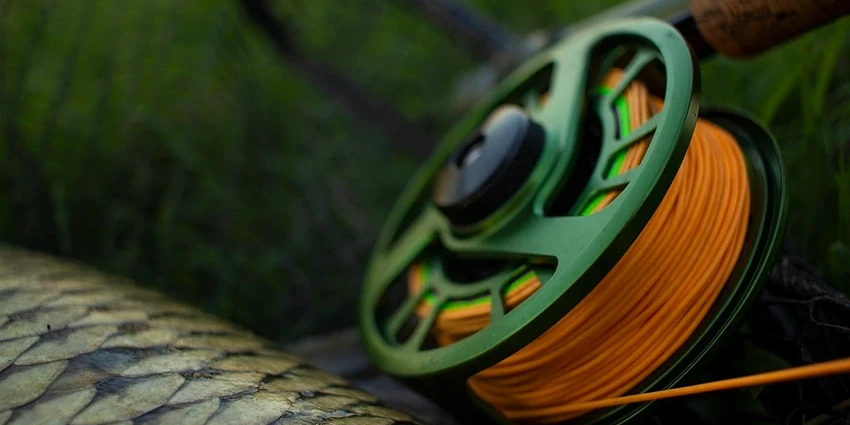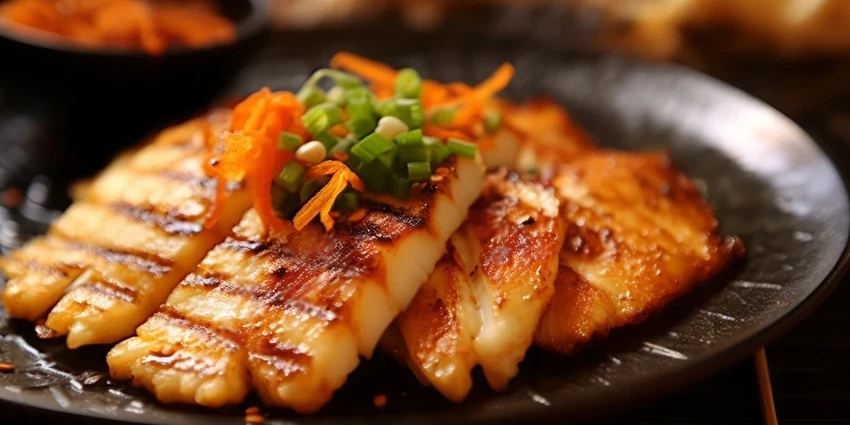All products were chosen independently by our editorial team. This review contains affiliate links and we may receive a commission for purchases made. Please read our affiliates FAQ page to find out more.
Jump to:
Can You Eat a Bonefish?
While bonefish are generally not considered a common food fish due to their strong, unpleasant taste, some people may consume them. However, catch-and-release practices are encouraged to preserve bonefish populations, as they are highly valued in sport fishing for their challenging nature and not primarily for culinary purposes.
Key Takeaways
- Bonefish as a Delicacy: In some cultures, especially in Hawaii and the Caribbean, bonefish is a traditional food.
- Health Risks: Bonefish may contain clupeotoxin and mercury, posing significant health risks.
- Legal Restrictions: In places like Florida, catching and consuming bonefish is heavily regulated.
- Sustainability Concerns: Overfishing and habitat loss threaten bonefish populations.
Bonefish, a name that often stirs the curiosity of both anglers and gourmands alike. This sleek, silver fish, predominantly found in tropical waters, has been a subject of debate when it comes to its edibility and safety. In this comprehensive exploration, we delve into various aspects of bonefish, from its culinary status in different cultures to the inherent risks associated with its consumption.
Introduction to Bonefish
Bonefish (Albula vulpes) are often found in the warm, tropical flats of regions like the Bahamas, Florida, and the Caribbean. Renowned for their speed and agility, they present a challenging catch for recreational anglers. However, the question arises – can these elusive creatures be more than just a trophy?
Bonefish as a Delicacy: Regional Preferences
While bonefish isn’t widely regarded as a culinary staple globally, certain regions hold it in high esteem. In Hawaii, for instance, bonefish, known locally as ‘O’io’, forms a part of traditional cuisine. The fish is known for its darker meat due to its muscular build, a result of its fast-swimming nature.
Cultural Significance
In the Caribbean, the preparation of bonefish takes on various forms, from being ground into balls and deep-fried to being used as a key ingredient in rich, flavorful stews. This variation in culinary practices highlights the fish’s cultural importance in these regions.
The Risks of Eating Bonefish: Clupeotoxin and Mercury
Despite its regional popularity, eating bonefish comes with significant risks.
Clupeotoxin Concerns
Clupeotoxin, a potent and deadly toxin, is often found in bonefish. This toxin, linked to plankton-eating fish, is not destroyed by cooking and can cause severe symptoms like nausea, vomiting, and in extreme cases, death.
Mercury Accumulation
Bonefish are known to accumulate mercury in their flesh. High levels of mercury consumption can lead to neurological damage, making it especially risky for pregnant women and children.
Legal Restrictions on Catching and Eating Bonefish
Laws and regulations surrounding the catching and consumption of bonefish vary by region. In Florida, for example, strict rules are in place to protect the bonefish population, crucial to the local tourism and fishing industries.
Regulation Table
| Region | Legal Status | Remarks |
| Florida | Catch and release only | Integral to tourism |
| Caribbean | Varied by country | Often consumed |
| Hawaii | No strict regulations | Traditional food source |
Sustainability Concerns: Economic and Environmental Impact
The sustainability of bonefish populations is a growing concern. Overfishing and habitat destruction have led to a decline in their numbers, which has a ripple effect on the local economies and ecosystems where they thrive.
Economic Value
In Florida, the estimated annual value of each living bonefish is around $3,500, highlighting its economic importance.
Environmental Impact
The depletion of bonefish in areas like Campeche, Mexico, due to unregulated fishing practices, underscores the need for sustainable fishing methods.
Sustainability Table
| Factor | Impact | Remarks |
| Overfishing | Decline in population | Affects local economies |
| Habitat Loss | Reduced numbers | Threatens biodiversity |
Describing Bonefish Taste and Texture
Bonefish meat is unique, often described as sweet and semi-firm, with a darker hue due to its muscular nature. This distinctive taste and texture set it apart from other common fish varieties.
Preparation Techniques: Cleaning and Deboning
Preparing bonefish for cooking is a meticulous process. Here’s a step-by-step guide:
- Descaling: Bonefish have large scales, requiring careful removal.
- Butterfly Filleting: This method is effective for removing meat from bones.
- Deboning: A crucial step, given the fish’s numerous small bones.
Preparation Table
| Step | Description | Importance |
| Descaling | Remove scales from tail to head | Ensures smooth texture |
| Filleting | Butterfly method preferred | Maximizes meat yield |
| Deboning | Remove bones carefully | Prevents choking hazard |
Cooking Methods and Recipes
Bonefish can be cooked in various ways, each bringing out its unique flavor.
Pan-Fried or Oven-Baked
Pan-frying fillets or baking deboned meat with lemon juice and seasoning are popular methods.
Bonefish Patties
Mix bonefish meat with egg and other ingredients, shape into patties, and fry.
Fish Soup
Use chopped bonefish meat in soups, adding vegetables and seasonings for flavor.
Ceviche
Cure bonefish with citrus fruits for a refreshing ceviche or poke bowl.
Alternative Options: When Not to Eat Bonefish

Given the risks associated with clupeotoxin and mercury, it’s advisable to avoid consuming bonefish, especially:
- In regions with high toxin levels: Such as areas known for clupeotoxin contamination.
- Pregnant women and children: Due to mercury content.
- Without proper preparation: To avoid the risk of choking on bones.
Register for our latest in-depth reviews and product round-ups from the experts
Enter your email address below to receive our twice monthly reviews emails.
By entering your details, you are agreeing to our terms and conditions and privacy policy. You can unsubscribe at any time.
Frequently Asked Questions
Bonefish can be good to eat if properly cleaned and deboned, but caution is advised due to health risks.
Risks include clupeotoxin poisoning and mercury accumulation, potentially leading to severe health issues.
Popular recipes include bonefish patties, fish soup, ceviche, and pan-fried or oven-baked fillets.
Martin Cochran, renowned for his expertise in deep-sea fishing and marine wildlife, plays a pivotal role at Fresh Catch Daily. His adventures across various oceans have equipped him with unique insights and techniques, enriching our platform with diverse and engaging content for fishing enthusiasts.










